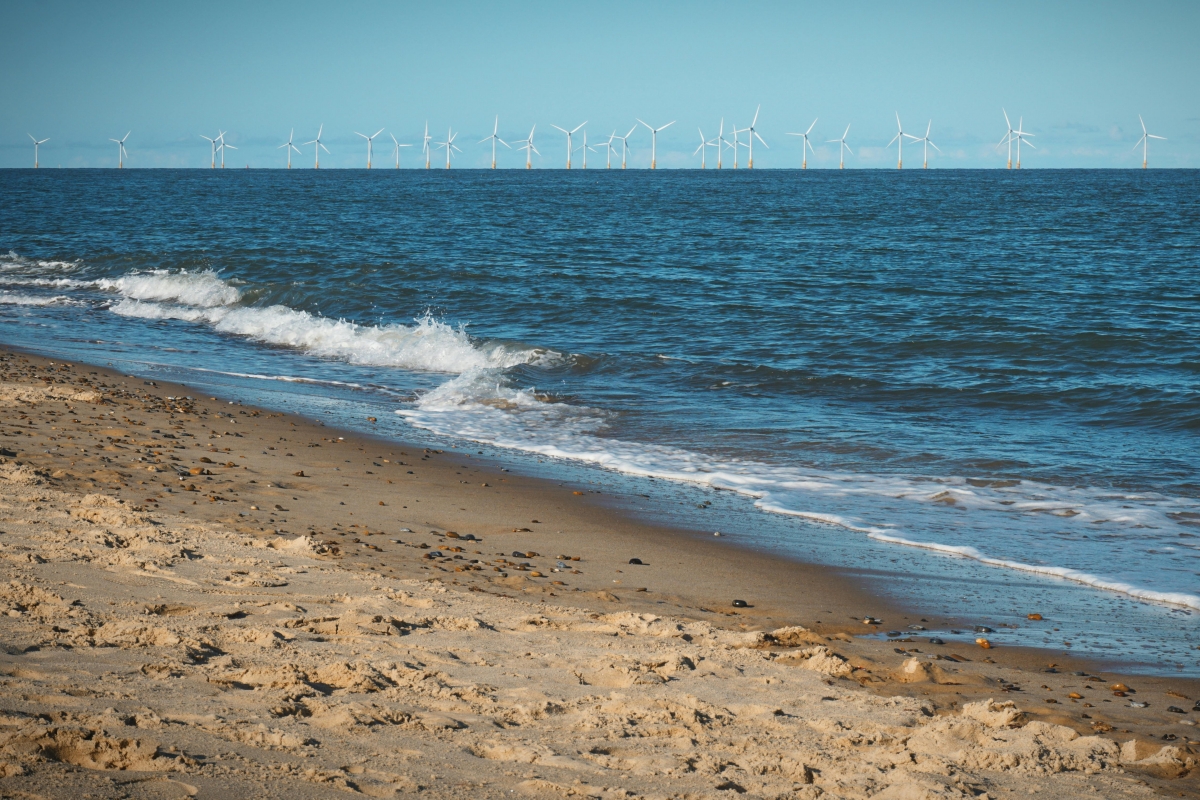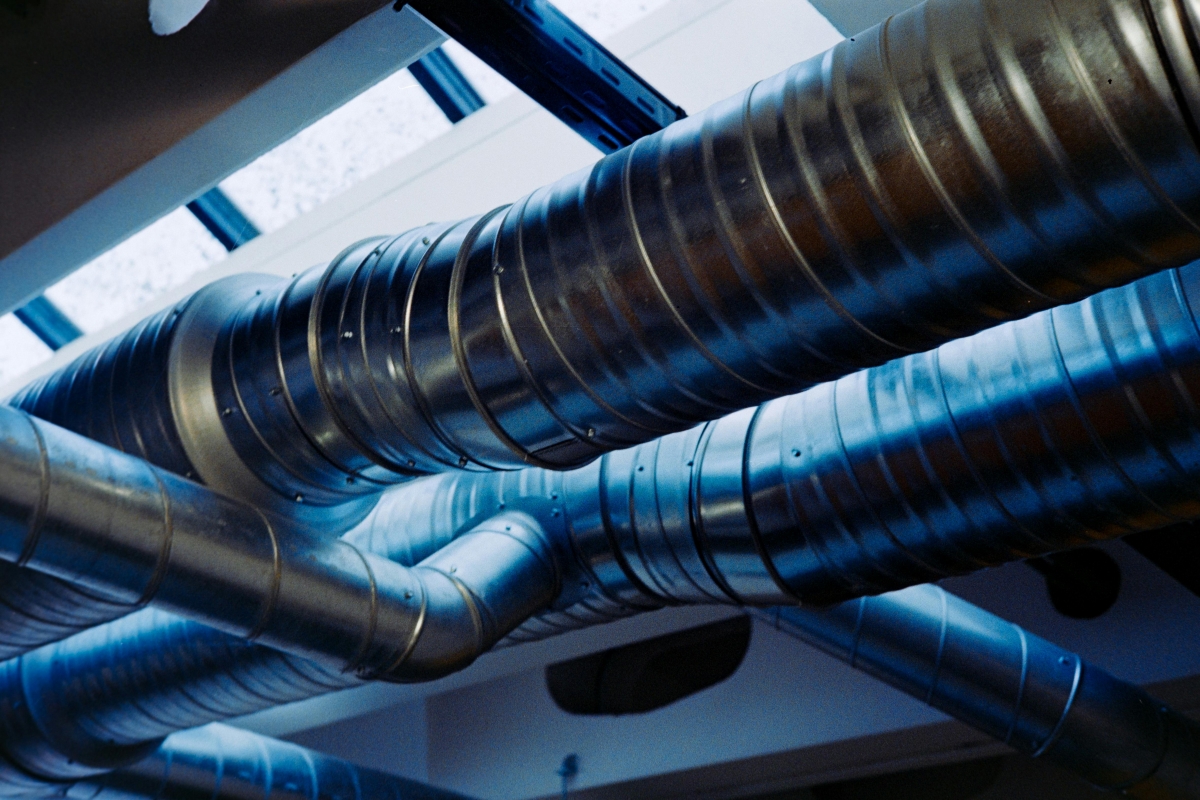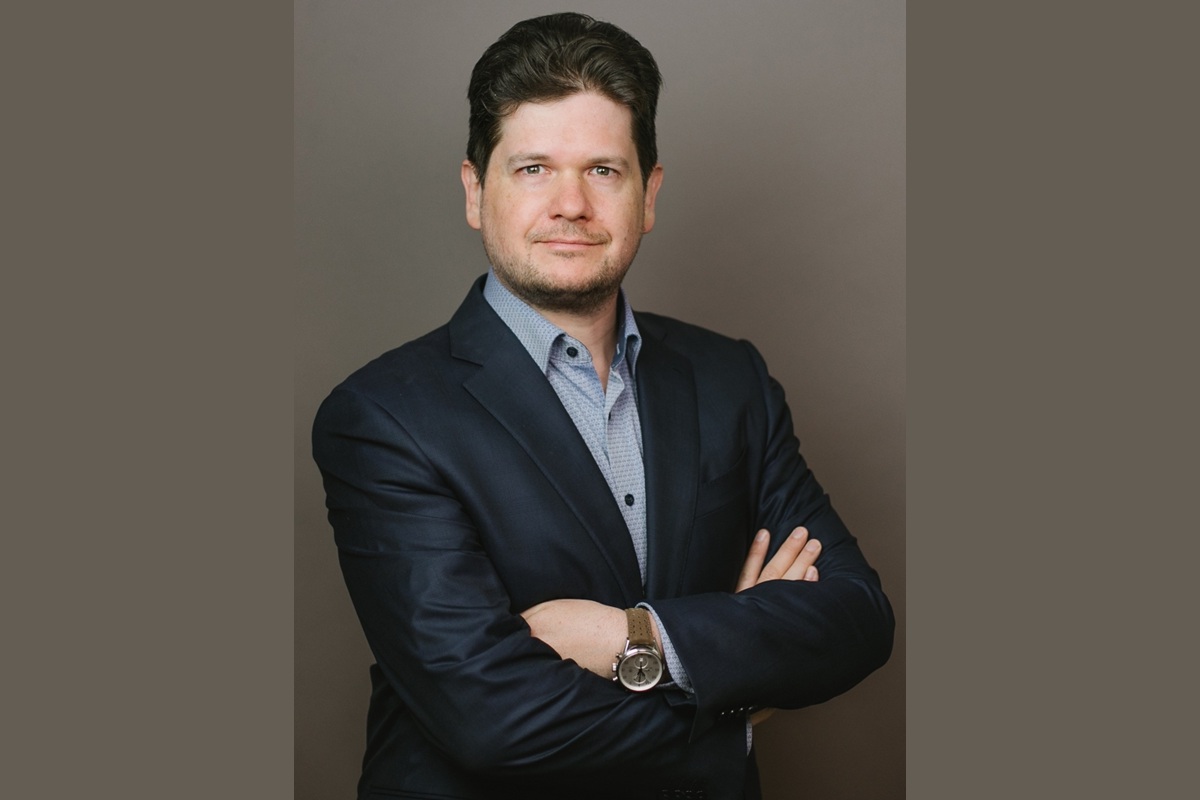Innovations in Data Center Power and Cooling Solutions
Data Centres
Innovations in Data Center Power and Cooling Solutions
News
Sustainable Infrastructure: Building Resilient, Low-Carbon Projects
New energy agreement for nLighten’s UK data centres
nLighten, a provider of sustainable edge data centre services operating across the UK, Germany, France, and the Netherlands, has entered into a new renewable energy supply agreement with UK-based provider Conrad Energy, covering all of nLighten’s edge data centre locations across the UK. Unlike traditional supply contracts, the agreement enables nLighten to monitor its renewable energy consumption with granularity – down to the asset level and on an hourly basis.
The partnership, which initially started in April 2024 with the delivery of renewable power, was enhanced in January 2025 with the introduction of detailed tracking and reporting capabilities. Previously, nLighten’s UK energy procurement was based on market-driven purchases supplemented by annual Guarantees of Origin.
Conrad Energy has progressively onboarded all nLighten UK meters, consolidating what was previously a fragmented energy procurement approach. Each month, nLighten receives a breakdown of its renewable energy supply from Conrad Energy. This includes asset-level insights into the share of wind, solar, and biomass sources contributing to the energy mix. The data allows nLighten to track its renewable coverage over time and calculate avoided CO₂ emissions based on the actual generation profile.
“This collaboration goes beyond what most energy suppliers currently offer in the UK,” claims Francesco Marasco, VP of Energy Operations & Sustainability at nLighten. “Not only can we align our procurement with real-time pricing, but we now also have full transparency over how – and where – our renewable energy is being generated. It’s another step towards building the most sustainable edge data centre platform in Europe.”
This model builds on learnings from a similar agreement nLighten established in Spain with Shell. However, the Conrad Energy agreement takes transparency a step further by providing visibility down to individual generation assets, not just the source.
“We’re proud to support nLighten’s efforts to lead the way in data centre sustainability,” says Tim Foster, Director of Energy for Business at Conrad Energy. “By combining flexible supply structures with granular data visibility, we’re helping digital infrastructure operators align more closely with today’s energy realities and decarbonisation goals.”
For more from nLighten, click here.
Joe Peck - 19 June 2025
Data Centres
Innovations in Data Center Power and Cooling Solutions
News
ABB and Applied Digital announce partnership
Applied Digital, a builder and operator of data centres, has launched an infrastructure partnership with ABB, a multinational corporation specialising in industrial automation and electrification products, at the company’s greenfield 400 MW campus in North Dakota, United States. The collaboration aims to innovate energy-efficient solutions to meet the needs of rapidly advancing artificial intelligence (AI) capabilities. As part of this long-term partnership, the first orders were booked in Q4 2024 and Q1 2025. Further financial details of the partnership were not disclosed.
Central to the partnership is a new medium voltage power architecture using ABB’s HiPerGuard Medium Voltage Static Uninterruptible Power Supply (UPS). The HiPerGuard technology seeks to help AI data centres increase power density while compressing electrical plant footprints and increasing energy efficiency. The partnership covers the complete design and development of the site’s electrical infrastructure.
Conventional data centres use low voltage power distribution and UPS systems. Switching to medium voltage for the UPS system and power distribution should enable data centres to scale more efficiently, expanding in 25 MW blocks. With fewer parts and cabling, installation should be simpler and reliability higher.
"What we are building with ABB is going to completely change the way our industry designs large-scale data centres. By leveraging ABB's cutting-edge technology and global reach, we are able to redefine the electrical infrastructure landscape and meet the growing demands to support large-scale AI Factories,” claims Todd Gale, Chief Development Officer, Applied Digital.
Massimiliano Cifalitti, Smart Power President, ABB Electrification, comments, "Partnerships like this are accelerating the timeline for AI-ready data centres with more competitive, resilient power infrastructures. ABB’s technology is designed for peak performance with dedicated capacity across our global production network and industry-leading innovation. ABB teams are ready to deliver at scale and at speed.”
For more from ABB, click here.
Joe Peck - 12 June 2025
Cooling
Data Centres
Innovations in Data Center Power and Cooling Solutions
Liquid Cooling Technologies Driving Data Centre Efficiency
Trane expands liquid cooling portfolio
Trane, an American manufacturer of heating, ventilation, and air conditioning (HVAC) systems, has announced enhanced liquid cooling capabilities for its thermal management systems, intended to help data centres become more future-ready. These include new, scalable Coolant Distribution Units (CDU), from 2.5MW to 10MW.
“We are a trusted innovator for mission-critical infrastructure, continuously co-innovating with our customers to design and develop the custom, integrated thermal management systems needed to support sustainable business growth,” claims Steve Obstein, Vice President and General Manager, Data Centers & High-Tech, Trane Technologies. “Through our scalable, modular approach to liquid cooling we can provide a platform for future sustainable capacity growth and thermal load requirements associated with rapidly escalating AI needs.”
The scalable 2.5MW to 10MW platform adds to Trane's 1MW CDU, aiming to give data centres flexible, direct-to-chip cooling capacity to manage high-density computing environments.
The company says it supports operations and uptime throughout the lifecycle of the data centre through its service and network of data-centre-qualified technicians, located in proximity to customers, and Smart Service options for monitoring, predictive maintenance, and energy management.
Key features of the new products include:
• Modular scalability — Supporting cooling capacities up to 10MW, adaptable to data centre sizes.
• Direct-to-chip liquid cooling technology — Optimised for high-density data centres.
• Compact footprint — Provides up to 10MW cooling capacity in a factory-skid-mounted design.
• Service and support — Access to resources and data-centre-qualified technicians from Trane.
For more from Trane, click here.
Joe Peck - 12 June 2025
Data Centres
Innovations in Data Center Power and Cooling Solutions
News
ZTE urges industry to rethink energy efficiency
ZTE Corporation, a Chinese multinational telecommunications equipment and systems company, showcased its AI-embedded solution for data centre infrastructure at Data Centre World Frankfurt 2025.
As artificial intelligence becomes deeply integrated into every layer of enterprise and cloud computing, the foundation of digital infrastructure is undergoing a fundamental transformation. Speaking at the event, Hans Neff, Senior Director of the CTO Group at ZTE, delivered a keynote address that challenged traditional efficiency metrics and static data centre models. He emphasised that in an AI-driven future, conventional benchmarks such as Power Usage Effectiveness (PUE) are "no longer sufficient" to measure the performance and adaptability of modern data centres.
In his address, Hans highlighted the paradox facing today's data centres: at the very moment when sustainability has become a strategic priority, AI is driving up compute intensity and energy demand at an unprecedented scale. He believes traditional benchmarks, originally designed for static, legacy systems, are no longer capable of capturing the complexity and dynamism of AI-driven workloads. "AI workloads are fundamentally different," says Hans. "They're denser, hotter, and more variable. To stay ahead, we can’t keep optimising for a world that no longer exists."
ZTE says its approach, drawn from global deployments and internal R&D, envisions energy efficiency not as a fixed target, but as an evolving system. The company states that it is engineering data centres that sense, predict, and respond to changing computational demands in real time.
In his keynote address, Hans also called on the industry to adopt more holistic metrics that better reflect the realities of modern data environments. He proposed a new composite framework that evaluates energy use not only by its efficiency, but also by its effectiveness in supporting intelligent operations, resiliency, and sustainability. "PUE is no longer enough," argues Hans. "We need smarter metrics that account for how power is used — not just how much."
For more from ZTE, click here.
Joe Peck - 6 June 2025
Data Centres
Innovations in Data Center Power and Cooling Solutions
News
JTS opens second Idaho facility
JTS, a Mission Critical Group (MCG) company, has announced the opening of a new 172,000 ft² manufacturing facility on 14 acres in Nampa, Idaho, USA, known as JTS Nampa 1. The $55 million investment adds 140 jobs, doubles the company’s production capacity, and supports long-term economic growth in the region. MCG’s US-based manufacturing footprint now exceeds 1 million ft², reinforcing its commitment to building critical power infrastructure in America.
“This expansion marks a pivotal moment for JTS and the customers we serve,” says Greg Blake, President of JTS. “We’re doubling our capacity and accelerating our ability to deliver innovative, high-quality power solutions that keep critical infrastructure running. We’re proud to invest in the community and drive the next chapter of American manufacturing here in Idaho.”
JTS now operates three locations: Caldwell, ID; Nampa, ID; and Abilene, TX. JTS Nampa 1, located near the Caldwell facility, shares resources and was built using LEAN manufacturing principles.
“The new Nampa facility is more than an expansion – it’s a milestone in our mission to shape the future of American manufacturing,” comments Jeff Drees, CEO of Mission Critical Group. “It strengthens our ability to serve data centres, hospitals, utilities, and other critical infrastructure with dependable power solutions. We’re also proud that our shared ownership model gives employees a real stake in our success, aligning our growth with the prosperity of the people who power it.”
Due to ongoing investments in data centres, infrastructure, and advanced technologies, the United States' electricity demand is expected to increase by over 50% by 2050. Meeting this growing energy need will require innovative and resilient power and electrical system solutions.
Nampa Mayor Debbie Kling adds, “We’re proud to welcome JTS’s new facility to Nampa. This investment brings 140 quality jobs to our city and strengthens our local economy. It’s a great example of how strategic partnerships and innovation can fuel lasting impact in our community.”
A grand opening and ribbon-cutting celebration, including remarks and tours, will take place at the JTS Nampa 1 facility on 17 June 2025 from 12:00pm to 3:30pm MT.
For more from JTS, click here.
Joe Peck - 3 June 2025
Data Centres
Innovations in Data Center Power and Cooling Solutions
News
Eaton and Siemens Energy to join forces
Intelligent power management company Eaton, and Siemens Energy, one of the world’s leading energy technology companies, have announced a fast-track approach to building data centres with integrated onsite power. They intend to address urgent market needs by offering reliable, grid-independent energy supplies and standardised modular systems to facilitate swift data centre construction and deployment.
The collaboration will enable simultaneous construction of data centres and associated on-site power generation with grid connection and the integration of renewables to meet any regional regulatory requirements. This aims to provide data centre owners and developers with choices they don’t have at present to enable them to build and run new data centres.
Siemens Energy’s modular and scalable power plant concept is designed to be tailored to the specific needs of data centre operators. The standard configuration generates 500 megawatts (MW) of electricity featuring SGT-800 gas turbines, redundancy, and additional battery storage systems. Based on its modular approach, the size of the plant can be scaled up and down. In the future, it could also operate in a carbon-neutral manner, provided hydrogen is available and a part of the data centre’s sustainability strategy. The Siemens Energy concept also includes an optional emission-free, clean air grid connection to be installed either during construction or as a retrofit. This feature would enable data centres to provide grid services.
Eaton will provide customers with electrical equipment such as medium voltage switchgear, low voltage switchgear, UPS, busways, structural support, racks and containment systems, engineering services, and the software offerings needed to protect and enable IT loads from the medium-voltage grid to the chip, as well as help accelerate building and commissioning data centres with skidded and modular designs.
Cyrille Brisson, Global Segment Leader, Data Centers, Eaton, says, “Our approach of letting customers pick the right balance of energy sources is very flexible and construction to start-up time is swift, with options to reduce emissions in both the short and long term. Crucially, our approach offers data centre owners and developers the opportunity to build capacity and bring it online fast in any location where they have land available that is close to gas, water, and fibre.”
Andreas Pistauer, Global Head of Sales, Siemens Energy’s Gas Services Business Area, states, “We offer hyperscalers, co-locators, and investors a unique package, enabling them to reduce the time-to-market by up to two years in many places, which leads to significant revenue gains. Our power plant design is built with redundancy, eliminating the need for backup diesel generators and reducing CO2 emissions by about 50%.”
For more from Eaton, click here.
Joe Peck - 3 June 2025
Data Centres
Innovations in Data Center Power and Cooling Solutions
News
CyrusOne and E.ON announce strategic partnership
CyrusOne, a global data centre owner, developer, and operator, and E.ON, one of Europe's largest energy companies, today announced they have entered into a Preferred Partnership agreement to design and deliver local power generation solutions for data centres.
The companies’ Preferred Partnership agreement enables them to work together to unlock future energy projects in Frankfurt – Europe’s largest data centre hub which is currently constrained by limited grid capacity and connection delays – and more widely across the continent. In addition to local power generation, the Partnership will collaborate on grid support, power purchase agreements, and heat management. Fundamentally, the Partnership seeks to offer near term capacity for customers in important availability zones in gateway markets with delayed access to grid capacity.
The first initiative in the Partnership will see E.ON Energy Infrastructure Solutions (EIS) design a local power generation system, named E.ON IQ Energy Center, to supply CyrusOne FRA7, a hyperscale data centre in Griesheim, Germany.
This local power generation system will supplement the existing power supply to deliver an additional 61 megawatts of electrical output to the facility by 2029, expanding the campus to offer a further 45 megawatts of IT capacity to customers – bringing the FRA7 campus’ total IT capacity to 126 megawatts.
“We are thrilled to announce this Partnership with E.ON to provide customers with a runway to large scale growth without utility risk by 2029. By leveraging the complementary expertise of both companies to scale innovative technologies, we are creating a unique opportunity to offer growth capacity for customers in their most important markets,” says Matthew Pullen, Executive Vice President and Managing Director, Europe at CyrusOne. “Our scalable platform will set new industry standards for the integration of advanced energy solutions, offering a replicable model for future data centres and setting the pace for European innovation in sustainable infrastructure.”
“This Partnership brings together two industry-leading companies to accelerate a sustainable digital future, developing solutions that provide both power and cooling to the data centre and heat to the campus,” states Marten Bunnemann, CEO at E.ON Energy Infrastructure Solutions. “What sets this Partnership apart is its strategic depth: a long-term alliance built on shared vision, technical integration, and real benefits for customers and the wider community.”
CyrusOne’s FRA7 data centre forms part of the Frankfurt Westside campus, a 73-hectare commercial and industrial mixed-use regeneration project managed by BEOS AG and Swiss Life Asset Managers.
In line with CyrusOne’s sustainability goals, and as part of the ongoing partnership with BEOS and Swiss Life Asset Managers, the proposed local power generation solution also places energy efficiency and environmental responsibility at its core.
The solution is expected to become the first of its kind to include a baseload cooling integration via absorption chillers designed to convert exhaust heat from the power generation process into cooling for the data centre. This method is designed to increase overall system efficiency, reduce power consumption, and improve Power Usage Effectiveness (PUE).
E.ON’s generation system is designed to produce power, cooling, and heat through a combustion process which also qualifies CyrusOne to secure green certificates of origin. While natural gas will initially be used to fuel the plant, the system is designed to be hydrogen-ready and capable of operating with up to 25% hydrogen blended into the fuel mix, with the option to transition to 100% hydrogen through upgrades where demand exists.
The local power generation system is also engineered to enhance the quality and usability of the data centre’s waste heat by integrating exhaust heat from its absorption chiller, raising the output temperature by approximately 10°C.
For more from CyrusOne, click here.
Joe Peck - 2 June 2025
Data Centres
Innovations in Data Center Power and Cooling Solutions
News
ZincFive expands global reach with EMEA warehouse
ZincFive, a world leader in nickel-zinc (NiZn) battery-based solutions for immediate power applications, today announced a major milestone in its global growth strategy with the establishment of a new warehouse and service depot in Europe. The facility, operated in collaboration with Akkuteam Energietechnik GmBH, will support delivery of ZincFive batteries and spare parts across the EMEA region and beyond.
This certified customs warehouse enables transit of batteries and components through Europe, streamlining exports to non-EU countries such as those in the Middle East. It also aims to advance ZincFive’s sustainability goals by reducing shipping-related emissions and improving logistics efficiency.
The move comes in response to accelerating international demand for ZincFive’s nickel-zinc technology. With many European installations still relying on legacy lead-acid systems, there is a growing appetite for safer, more sustainable, and high-performance alternatives.
“This is more than a logistical move – it’s a signal of our long-term commitment to the EMEA market,” says ZincFive CEO Tim Hysell. “Our values of innovation, sustainability, and reliability are mirrored in this new partnership. With a facility designed for efficient, environmentally responsible battery logistics, we’re not just expanding our footprint – we’re doing it the right way. We’re investing where demand is real and growing – this isn’t speculative; it’s a response to the strong pull we’re seeing from European and Middle Eastern markets.”
Akkuteam, a family-run company with a 25-year history in backup power solutions, brings expertise in battery storage and handling, operating with a focus on quality and environmental stewardship.
Power demand is rising across sectors – and especially in data centres, including the fast-emerging AI segment. ZincFive's patented nickel-zinc chemistry seeks to deliver safe, sustainable, and high-performance energy storage and to challenge the dominance of lead-acid and lithium-ion batteries. The ZincFive BC Series UPS Battery Cabinets – including the latest BC 2–500 and BC 2–300X models – were developed with the aim to offer an industry-leading footprint while delivering greater power to meet the escalating demands of modern infrastructure.
For more from ZincFive, click here.
Joe Peck - 23 May 2025
Data Centres
Innovations in Data Center Power and Cooling Solutions
Eaton delivers energy savings in its new UPS
Eaton, an intelligent power management company, has announced the launch of its 9PX Gen2 5-11kW UPS, a new product that adds benefits to its 9PX solution through advanced technology upgrades and customer-centric enhancements. It seeks to deliver best-in-class power management and battery backup for critical equipment in data centres, distributed IT, edge networks, network closets, and server rooms. Eaton DPQ Product Line Manager Christophe Jammes comments, “Our latest UPS delivers market-leading efficiency of up to 97.2% in the 11kW unit thanks to innovative silicon carbide (SiC) components that not only use less power, and therefore cut energy bills, but also put operators one step ahead in emissions reduction. “When it comes to physical footprint,” he adds, “9PX Gen2 is the compact UPS that leads the way, delivering 11kW in just 4U. It offers an unmatched and Energy Star-qualified 11% more power in a space 33% smaller than its predecessor.” Every 9PX Gen2 UPS comes with a cybersecure Gigabit Network Card – enabling remote configuration, management, and upgrade of the entire UPS fleet, including full integration with Eaton’s Brightlayer Data Centers suite. Speaking of the product’s features, Christophe says, “In what we believe to be a UPS ’world first’, flexible ‘combo’ C39 outlets securely connect both C14 and C20 power cords – ending the guessing game of attempting to specify the required number of C13 (10A) and C19 (16A) outlets.” Predictive machine learning pinpoints timing for battery replacement by fast, convenient ‘hot swap’ – preventing unexpected downtime and the unnecessary expense of replacing batteries too soon. Optimised ABM+ charging also increases battery lifespan by up to 50%. 9PX Gen2 comes with a three-year warranty on electronic components and a two-year warranty on batteries (full three-year upon registration). There is also the option to extend coverage for the longer term to up to seven years of protection and support.
For more from Eaton, click here.
Joe Peck - 23 May 2025
Data Centre Infrastructure News & Trends
Data Centres
Innovations in Data Center Power and Cooling Solutions
News
Vertiv accelerates AI infrastructure evolution
Vertiv, a global provider of critical digital infrastructure, today confirmed its strategic alignment with NVIDIA’s announcement of an AI roadmap to deploy 800 VDC power architectures for the next generation of AI-centric data centres. Paving the way for future-ready designs, Vertiv’s 800 VDC power portfolio is scheduled for release in the second half of 2026 - ahead of NVIDIA Kyber and NVIDIA Rubin Ultra platform rollouts.
Vertiv aligns with the NVIDIA AI roadmap to stay one GPU generation ahead, enabling customers to deploy their power and cooling infrastructure in sync with NVIDIA’s next-generation compute platforms. Vertiv provides end-to-end power, cooling, integrated infrastructure and services to support AI factories and other data centre deployments.
As rack power requirements in AI environments scale beyond 300 kilowatts, 800 VDC enables more efficient, centralised power delivery by reducing copper usage, current, and thermal losses. Vertiv’s upcoming portfolio will feature centralised rectifiers, high-efficiency DC busways, rack-level DC-DC converters, and DC-compatible backup systems, expanding its broad, end-to-end power management portfolio that already includes a robust AC power train.
“As GPUs evolve to support increasingly complex AI applications at giga-watt scale, power and cooling providers need to be equally innovative to provide energy-efficient and high-density solutions for the AI factories. While the 800 VDC portfolio is new, DC power isn’t a new direction for us, it’s a continuation of what we’ve already done at scale,” says Scott Armul, Executive Vice President of Global Portfolio and Business Units at Vertiv.
“We’ve spent decades deploying higher-voltage DC architectures across global telecom, industrial, and data centre applications. We’re entering this transition from a position of strength and bringing real-world experience to meet the demands of the AI factory.”
Vertiv’s experience in DC power spans more than two decades of ±400 VDC deployments, broadened by strategic acquisitions during the early 2000s. These solutions support critical loads in global telecom networks, integrated microgrids, and mission-critical facilities. Vertiv says that this foundation establishes the company as a trusted leader in the safe design, deployment, and operation of higher-voltage DC architectures, with proven scale, portfolio, and long-term serviceability.
Designed for homogeneous AI zones in hyperscale environments, Vertiv’s 800 VDC portfolio is a key pillar of its 'unit of compute' strategy - a systems-level design engineered to enable all infrastructure components - to interoperate as one modular and scalable system, matching infrastructure demands of next-generation GPUs. Vertiv’s support for both AC and DC architectures is a strategic differentiator in the evolving AI data centre landscape.
For more from Vertiv, click here.
Simon Rowley - 19 May 2025

Head office & Accounts:
Suite 14, 6-8 Revenge Road, Lordswood
Kent ME5 8UD
T: +44 (0)1634 673163
F: +44 (0)1634 673173









